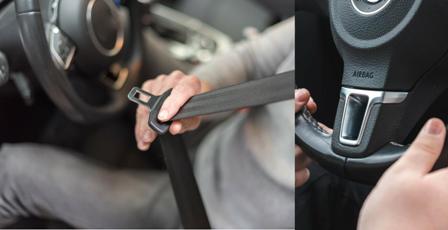EUGENE HERBERT
As vehicles become more advanced, so do the safety features intended to keep drivers safe.
What many drivers may not know is that most safety features do not work, if not used correctly or without the use of other safety features.
This requires drivers to fully understand the benefits of their vehicle’s technology and consequently how it works and what it needs to work properly.
Seatbelts and airbags
Airbags cannot function properly without seatbelts. In most cars with airbags, it will likely still deploy in a crash. As a result, the airbag will collide with you at approximately 300 km an hour without a safety belt to reduce this impact.
Newer cars, particularly in first world countries, are investigating and experimenting with technology that deactivates airbags if the car senses a seatbelt hasn’t been clicked in. It is also very difficult to drive without a seatbelt due to the warning signals and some cars even prevent starting without a seatbelt. This, however, is reserved for higher end vehicles and people also, unfortunately, find ways around this. Thus, not using a seatbelt can either make your airbags a hazard or remove their use altogether.
Adaptive cruise control and speed
Adaptive cruise control (ACC) is a more enhanced version of cruise control that uses sensors to calculate and maintain a pre-selected following distance from vehicles ahead of you. It removes the need to continuously break and then reset the system.
“Recent studies, however, find that drivers tend to speed more when using it as they set their speeds higher. This has resulted in a 10% higher risk of being in a fatal crash when using ACC because they are speeding.
Thus, ACC both removes an irritation of cruise control and can provide extra safety benefits. This does not, however, remove the danger of speeding.
Autonomous technology and the environment
Features such as autonomous emergency braking (AEB) are one of the first steps moving toward autonomous driving. It’s newness, however, can make it an unreliable safety feature if you don’t understand how it works. Firstly, not all AEB is equal. Some only work at low speeds in some cars and at all speed in others. Don’t assume that all AEB will work the same. Familiarize yourself with what your car has and how it works.
Additionally, autonomous driving is likely to take some time to pick up in Africa, as it is dependent on clear road markings among other requirements. Unclear road markings could make autonomous driving impossible. It can also result in sensors picking up objects that pose no risk, such as leaves, and force your car into a sudden and often extreme emergency braking. Granted, it will warn you but short of getting out and dusting off the road it can result in uncomfortable situations. It is too soon to rely on autonomous driving 100%. There is still much advancement to be seen.
Quite seldom do safety feature work in isolation. It is essential to understand every safety feature your car has and what is needed for it to work properly, and more importantly for it to not become a hazard.
Eugene Herbert is the CEO of MasterDrive based in SA




